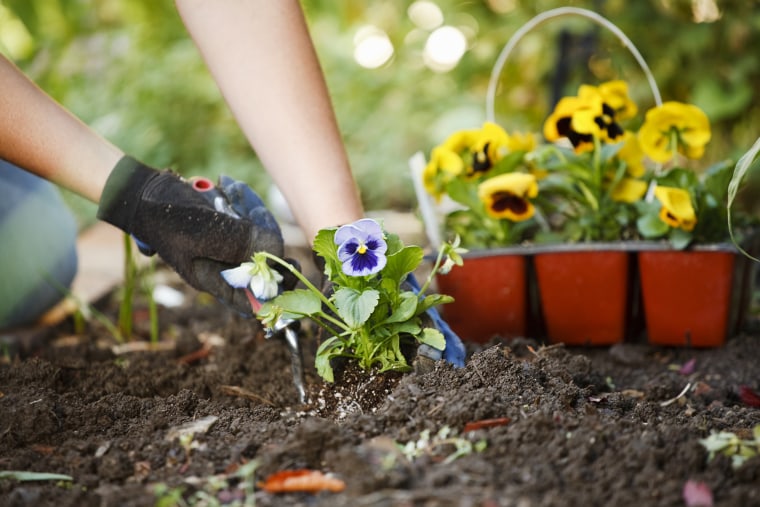Garden centers and nurseries are bursting with color and overflowing with merchandise right now. It’s hard to walk by without buying a few plants. (You can never have enough, right?)
If you’re making a significant purchase, especially for expensive shrubs and trees, take the time to shop around.
A recent survey by Checkbook.org — published by the Center for the Study of Services, an independent, nonprofit consumer organization — shows that price and quality vary greatly from place to place.
Checkbook surveyed prices for 27 different plants at big garden centers, hardware stores and nurseries in and around seven cities: Boston, Chicago, Minneapolis, Philadelphia, San Francisco, Seattle and Washington, D.C.
"Our undercover shoppers found big price differences at the local garden centers we surveyed,” said Kevin Brasler, Checkbook’s executive editor. “Some charged five times more than the lowest-priced stores for the same size and type of plants.”
A few examples:
- Lavender (#1 container/6” pot) ranged from $4.99 to $15.99 around the Puget Sound
- False cypress (#3 container) ranged from $12.98 to $57.50 in Boston
- Boxwood (#3 container) ranged from $12.49 to $69.50 around the Delaware Valley
The big guys have the best prices, but what about quality?
If you want to pay the lowest possible price for your plants, shop at one of the big chains. The Home Depot (29 percent lower than average) and Lowe’s (26 percent below average) had the best prices in all seven cities Checkbook surveyed. While none of the independents surveyed beat The Home Depot or Lowe’s for price, they did score significantly higher on quality.
“The Home Depot and Lowe’s got really lousy ratings from the customers we surveyed for their overall quality,” Brasler said.
Here are the average quality scores (out of 100) from customers Checkbook surveyed in the seven cities:
Quality of the products
- The Home Depot: 38 percent
- Lowe’s: 44 percent
- Independent stores: 83 percent
Advice
- The Home Depot: 25 percent
- Lowe’s: 32 percent
- Independent stores: 77 percent
Overall quality
- The Home Depot: 33 percent
- Lowe’s: 39 percent
- Independent stores: 78 percent
“This is one of the few topics we cover at Checkbook where there’s actually a relationship between what you pay and what you get,” Brasler told me. “Stores that offer really high-quality plants and great advice tend to charge higher prices.”
NBC News BETTER contacted The Home Depot and Lowe’s. Lowe’s did not respond.
The Home Depot said it “strives to give our customers the best value and convenience.” In its statement, the company said it is “pleased to see customers are coming to us for the best price and product selection.”
I think a lot of gardeners are like me — we shop at more than once place. If I just need some annuals for the back deck, I go to one of the big box stores to get the best price.
On the other hand, if I’m looking for an expensive tree or shrub that I expect to grow for years and years, I head to the local nursery. I know I’ll pay more, but the plants are top quality and the advice I get is invaluable.
Those plants may come with a guarantee
Some stores guarantee their plants. If something goes wrong within a reasonable amount of time, you may be able to get a refund or replacement. At Lowe’s and The Home Depot, perennials, trees and shrubs come with a 1-year guarantee, so save your receipts.
So, when you go plant shopping, especially if you’re buying something expensive, check the guarantee and find out what you need to do to keep that guarantee in force — there may be caveats. At a smaller store or nursery, see if you can get that guarantee in writing.
Stores that offer really high-quality plants and great advice tend to charge higher prices.
Kevin Brasler, executive editor, Checkbook.org
A few shopping tips
Make sure the plants you’re taking home are in good condition. Healthy plants will live longer and look better.
So what should you look for?
- Check the leaves: Look for signs of disease, such as brown or grayed areas or spots on the leaves or stems. According to HGTV, you want leaves that look “vigorous and perky, with strong color, and show no signs of mildew, black spots or extensive insect damage,”
- Check the soil: It should be moist. If it’s dried out and rock hard, move along.
- Check the drainage holes: Look at the bottom of the plant container. Excess white residue indicates over-fertilization.
Before you leave, ask for instructions on planting and proper care.
Check out: How to choose the best sunscreen, according to these dermatologists
Want more tips like these? NBC News BETTER is obsessed with finding easier, healthier and smarter ways to live. Sign up for our newsletter and follow us on Facebook, Twitter and Instagram.

